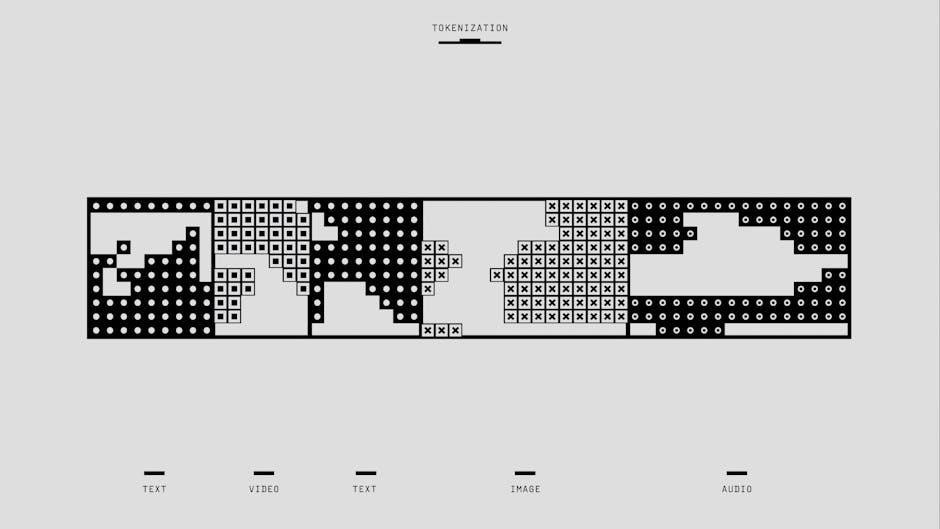Welcome to this comprehensive worksheet on the endocrine system! Designed for students, it covers key concepts, hormones, glands, and their functions. Interactive questions and an answer key are included for self-assessment and deeper understanding of how the endocrine system regulates growth, metabolism, and homeostasis in the body.
Overview of the Endocrine System
The endocrine system is a network of glands that produce and secrete hormones, which are chemical messengers regulating various bodily functions. These hormones control growth, development, metabolism, and homeostasis. The system works slower than the nervous system but has a more prolonged effect. Key components include glands like the pancreas, thyroid, and adrenal glands, which release hormones directly into the bloodstream. The endocrine system adjusts hormone levels to maintain balance, enabling the body to respond to emergencies and regulate energy levels. Understanding this system is crucial for grasping its role in overall health and bodily functions.
Importance of the Endocrine System Worksheet
This worksheet is a valuable educational tool for understanding the endocrine system, offering a structured approach to learning about hormones, glands, and their functions. It provides a comprehensive review of key concepts through multiple-choice questions, fill-in-the-blanks, and matching exercises. The inclusion of an answer key enables self-assessment, helping students identify areas for further study. Interactive elements, such as labeling diagrams, enhance engagement and reinforce learning. By completing this worksheet, students gain a solid foundation in endocrinology, making it an essential resource for both classroom and independent study. It fosters critical thinking and long-term retention of complex biological processes.

Structure of the Endocrine System Worksheet
The worksheet is organized into clear sections, including multiple-choice questions, fill-in-the-blanks, and matching exercises. Interactive elements like labeling diagrams enhance engagement, while an answer key provides immediate feedback, aiding in understanding and retention of endocrine system concepts.
Types of Questions Included
The worksheet features a variety of question types to cater to different learning styles. Multiple-choice questions test factual knowledge, while fill-in-the-blank exercises enhance vocabulary and comprehension. True or false statements encourage critical thinking, and matching exercises help students link concepts with their definitions. Each question type is designed to reinforce understanding of endocrine system functions, glands, and hormones. The inclusion of interactive elements, such as labeling diagrams, further engages learners and ensures a comprehensive grasp of the material. An answer key is provided for self-assessment, allowing students to track their progress effectively.
Interactive Elements of the Worksheet
The worksheet incorporates engaging interactive elements to enhance learning. Labeling diagrams of endocrine glands allow students to visually identify key structures, while matching exercises link terms with their definitions. Interactive quizzes provide immediate feedback, helping students gauge their understanding. Animated tutorials offer step-by-step explanations of hormone production, making complex processes easier to grasp. Virtual labs simulate experiments, such as observing blood sugar regulation, giving students hands-on experience. These interactive tools cater to different learning styles, fostering a deeper engagement with the material and improving retention of endocrine system concepts.
Key Concepts Covered in the Worksheet
This worksheet explores essential aspects of the endocrine system, focusing on hormone production, regulation of growth, metabolism, and homeostasis. It emphasizes identifying major endocrine glands, such as the pancreas, thyroid, and adrenal glands, and their specific roles. Students learn about feedback mechanisms controlling hormone levels and the classification of hormones into different types. The worksheet also covers blood sugar regulation, the function of insulin and glucagon, and the impact of hormonal imbalances. Additionally, it introduces the relationship between the endocrine and nervous systems and highlights common endocrine disorders, providing a well-rounded understanding of the system’s significance and functionality.

Functions of the Endocrine System
The endocrine system regulates various bodily functions, including growth, metabolism, energy levels, and reproduction. It maintains homeostasis and prepares the body for emergencies and stress.
Regulating Growth and Development
The endocrine system plays a pivotal role in regulating growth and development by producing hormones that stimulate cellular growth and differentiation. Growth hormone, produced by the pituitary gland, is essential for height and muscle mass development during childhood and adolescence. Thyroid hormones also promote growth and brain development. These hormones ensure proper development from childhood to adulthood, including the onset of puberty, where sex hormones like estrogen and testosterone trigger physical changes. The endocrine system ensures a balanced and timely progression of growth, making it a critical regulator of developmental processes in the human body.

Controlling Metabolism and Energy Levels
The endocrine system regulates metabolism and energy levels through hormones like insulin, glucagon, and thyroid hormones. Insulin and glucagon, produced by the pancreas, maintain blood sugar balance by facilitating glucose uptake and release. Thyroid hormones increase cellular metabolism, influencing energy expenditure and heat production. Additionally, adrenal glands release adrenaline during stress, boosting energy by increasing heart rate and glucose release. This hormonal regulation ensures the body efficiently manages energy storage, utilization, and maintains metabolic homeostasis, essential for daily functioning and overall health.
Maintaining Homeostasis in the Body
The endocrine system plays a vital role in maintaining homeostasis by regulating internal balance. Hormones like insulin and glucagon control blood sugar levels, while parathyroid hormone manages calcium levels. The adrenal glands produce aldosterone to regulate water and electrolyte balance, and the kidneys adjust fluid levels through hormones like antidiuretic hormone. These processes ensure stable internal conditions, enabling proper cellular function and overall health. This balance is crucial for sustaining life and allowing the body to function optimally under varying conditions.
Preparing the Body for Emergencies
The endocrine system prepares the body for emergencies by releasing hormones that trigger a “fight-or-flight” response. The adrenal glands produce adrenaline (epinephrine), which increases heart rate, blood pressure, and energy levels. Cortisol, another hormone released during stress, helps maintain blood sugar levels and supports the body’s recovery. These hormonal responses enable the body to react quickly to danger or stress, ensuring immediate energy and resource allocation to critical functions. This mechanism is essential for survival, allowing the body to adapt and respond effectively to emergencies. The worksheet explores these processes in detail, enhancing understanding of the endocrine system’s role in emergency preparedness.

Key Components of the Endocrine System
The endocrine system consists of major glands like the pituitary, thyroid, pancreas, adrenal, and gonads, which produce and regulate hormones essential for various bodily functions. These hormones control growth, metabolism, and homeostasis, ensuring proper communication between cells and organs. The worksheet explores these components in detail, providing a clear understanding of their roles and interactions within the body.
Major Endocrine Glands and Their Roles
The endocrine system is primarily composed of several key glands that play vital roles in regulating bodily functions. The pituitary gland, often referred to as the “master gland,” controls the activity of other endocrine glands. The thyroid gland regulates metabolism and energy levels through hormones like thyroxine. The pancreas produces insulin and glucagon, essential for blood sugar regulation. The adrenal glands release hormones such as adrenaline and cortisol, which help the body respond to stress. Lastly, the gonads (ovaries and testes) produce sex hormones that drive reproduction and sexual development. These glands work together to maintain hormonal balance and overall health.
Hormones and Their Functions
Hormones are chemical messengers produced by endocrine glands that regulate various bodily functions. They travel through the bloodstream to target cells, influencing processes like growth, metabolism, and reproductive cycles. Key hormones include insulin, which regulates blood sugar levels, and thyroxine, which controls metabolism. Adrenaline prepares the body for stress, while sex hormones like estrogen and testosterone drive reproductive development. Each hormone has specific roles, ensuring proper bodily functions and maintaining homeostasis. Understanding hormones is essential for grasping how the endocrine system orchestrates overall health and development. This section provides detailed insights into the diverse functions of hormones within the body.
Relationship Between Glands and Hormones
Endocrine glands specialize in producing, storing, and releasing hormones, which are vital for regulating various bodily functions. Each gland synthesizes specific hormones tailored to their roles, such as the pancreas producing insulin to control blood sugar. Hormones act as messengers, traveling through the bloodstream to target cells, ensuring precise regulation of processes like metabolism, growth, and reproductive cycles. The relationship between glands and hormones is essential for maintaining homeostasis and enabling the body to respond to internal and external changes effectively. This intricate connection underscores the critical role of the endocrine system in overall health and function.
blood Sugar Regulation by the Pancreas
The pancreas plays a central role in blood sugar regulation by producing insulin and glucagon, hormones that maintain glucose balance. When blood glucose levels rise, insulin is released, facilitating glucose uptake into cells for energy or storage. Conversely, when blood glucose drops, glucagon stimulates the liver to release stored glucose. This dynamic process ensures stable energy levels and prevents fluctuations that could harm the body. The pancreas’s precise regulation is vital for metabolic health, highlighting its importance in the endocrine system’s function. This balance is a key focus in understanding how the body manages energy and maintains homeostasis.

Types of Questions in the Worksheet
The worksheet includes multiple-choice questions, fill-in-the-blank exercises, true/false statements, and matching activities to engage students and assess understanding of the endocrine system.
Multiple Choice Questions
The worksheet features 20 multiple-choice questions designed to test knowledge about the endocrine system. These questions cover various topics, such as the functions of endocrine glands, the role of hormones, and the regulation of bodily processes. For example, one question asks about the majority of hormones being peptide or amino acid-derived, while another focuses on identifying the correct gland responsible for specific functions. The questions are structured to assess both basic and advanced understanding, with clear answer choices provided. An answer key is included, allowing students to verify their responses and improve their grasp of the material. This section enhances retention and understanding through engaging and varied queries.
Fill-in-the-Blank Questions
The worksheet includes a section of fill-in-the-blank questions designed to reinforce key concepts about the endocrine system. Students are prompted to complete sentences using terms related to glands, hormones, and their functions. For example, questions may ask about the role of the pancreas in regulating blood sugar or the function of the thyroid gland. The blanks are strategically placed to test recall of specific terminology and processes. An answer key is provided, allowing students to check their work and ensure understanding. This format helps students connect terms with their definitions, enhancing retention and familiarity with endocrine system components.
True or False Statements
The worksheet features true or false statements to test students’ understanding of endocrine system fundamentals. Questions cover topics like hormone functions, gland locations, and system processes. For example, “The pancreas produces insulin” (true) or “The thyroid gland is located in the abdomen” (false). This format encourages critical thinking and quick recall of key facts. An answer key is provided for self-assessment, helping students identify areas for review. True or false statements are an engaging way to reinforce learning and ensure mastery of essential concepts in a clear and concise manner. This section is designed to be both educational and interactive.
Matching Exercises
Matching exercises in the worksheet challenge students to pair terms with their correct definitions or functions. For example, matching endocrine glands like the pancreas or thyroid with their respective hormones, such as insulin or thyroxine. Another exercise involves linking endocrine disorders, like diabetes or hypothyroidism, to their definitions. This interactive format helps students connect key concepts visually, enhancing memory retention. The answer key provides correct matches for self-assessment. These exercises are designed to be engaging and educational, making complex topics more approachable while ensuring a thorough understanding of the endocrine system’s components and processes. This section is ideal for visual learners and reinforces learning effectively.

Answer Section of the Worksheet
The answer section provides detailed solutions for multiple choice, fill-in-the-blank, and true or false questions. It includes correct matches for all exercises, ensuring accurate self-assessment.
Key to Multiple Choice Questions
The key to multiple choice questions provides the correct answers for each question in the worksheet. It includes explanations for complex questions, ensuring clarity and understanding. Students can use this section to verify their responses and identify areas for improvement. The key is organized by question number, making it easy to navigate and review. Detailed explanations help reinforce learning and address common misconceptions. This resource is essential for self-assessment and ensuring mastery of endocrine system concepts.
Answers to Fill-in-the-Blank Questions
This section provides the correct answers to fill-in-the-blank questions, ensuring students can verify their responses accurately. Each blank is filled with precise terms, such as “pineal gland” or “hormones,” to reinforce understanding. The answers are organized numerically, corresponding to the questions in the worksheet. Explanations accompany complex terms to clarify their roles, like the pineal gland controlling biorhythms. This resource helps students master endocrine system concepts by identifying correct terminology and their functions, making it an essential tool for self-study and review.
True or False Answer Key
This section provides the correct answers to the true or false questions, allowing students to check their understanding. Each statement is marked as True or False, with brief explanations. For example, “The thyroid gland produces thyroxine” is True, while “The pancreas does not regulate blood sugar” is False. Clear explanations clarify why each statement is correct or incorrect, helping students grasp key concepts. This resource ensures accuracy and reinforces learning by addressing common misconceptions about the endocrine system and its functions.
Correct Matches for Matching Exercises
This section provides the correct pairings for matching exercises, ensuring students can verify their answers accurately. For example, “Thyroid gland” matches with “Produces thyroxine,” and “Pancreas” matches with “Regulates blood sugar.” Each term is aligned with its correct counterpart, such as “Adrenal gland” with “Produces adrenaline” or “Pituitary gland” with “Controls other endocrine glands.” The answer key clarifies any doubts and reinforces learning by showing the precise relationships between glands, hormones, and their functions. This resource is essential for mastering the endocrine system’s complex terminology and concepts.

Learning Resources and Additional Materials
Access downloadable PDFs, recommended reading, and online resources for deeper study. Practice worksheets and a glossary of endocrine system terms are also available for enhanced understanding.
Recommended Reading for Further Study
For a deeper understanding, explore textbooks like “Human Anatomy & Physiology” by Elaine N. Marieb, which provides detailed insights into the endocrine system. Online resources such as Khan Academy and BiologyCorner offer comprehensive guides and study materials. Additionally, “Endocrine Physiology” by Burton Goldberg and the National Institute of Diabetes and Digestive and Kidney Diseases (NIDDK) website are excellent sources for advanced learning. These materials complement the worksheet, offering visual aids, case studies, and interactive tools to enhance your grasp of hormonal functions and glandular mechanisms.
Online Resources for Endocrine System Learning
Enhance your learning with online platforms like KidsHealth.org, which offers engaging quizzes and detailed explanations. BiologyCorner provides interactive diagrams and practice questions, while Khan Academy features video tutorials and exercises. Websites such as NIDDK and EndocrineWeb offer in-depth guides on hormone functions and glandular processes. Additionally, online quizzes from reliable sources like Quizlet can reinforce your understanding. These resources complement the worksheet, offering visual aids, real-time feedback, and comprehensive study materials to deepen your knowledge of the endocrine system and its essential roles in the body.
Practice Worksheets and Quizzes
Supplement your learning with practice worksheets and quizzes available online. These resources include multiple-choice questions, fill-in-the-blank exercises, and matching games to test your understanding. Websites like BiologyCorner and Khan Academy offer interactive tools to reinforce concepts. PDF worksheets with answer keys provide opportunities for self-assessment, ensuring you can track your progress. Quizzes cover topics such as hormone functions, gland locations, and endocrine system roles, helping you master the material effectively. Utilize these resources to engage with the content in a dynamic and structured way, enhancing your grasp of the endocrine system through hands-on practice.
Glossary of Terms Related to the Endocrine System
A comprehensive glossary of terms related to the endocrine system is essential for understanding key concepts. Terms include endocrine system (a network of glands producing hormones), hormones (chemical messengers regulating body functions), glands (organs secreting hormones), and homeostasis (maintaining internal balance). Specific glands like the pancreas (regulates blood sugar), adrenal glands (produce stress hormones), and thyroid (controls metabolism) are defined. Other terms include pituitary gland (master gland), hypothalamus (regulates hormone production), and pineal gland (produces melatonin). Understanding these terms aids in mastering the worksheet and grasping endocrine system functions effectively.

Interactive Learning Tools
Engage with labeling diagrams, interactive quizzes, and virtual labs to explore hormone production and gland functions. These tools provide immediate feedback and enhance understanding of the endocrine system.
Labeling Diagrams of Endocrine Glands
Labeling diagrams of endocrine glands is an essential activity in this worksheet. Students identify and name key glands like the pituitary, thyroid, pancreas, adrenal, and gonads. This exercise helps visualize the endocrine system’s structure and understand the location of each gland. Clear instructions guide learners to label accurately, using abbreviations or full names as specified. The activity enhances recognition of glandular structures and their roles in hormone production. By completing this task, students gain a foundational understanding of how glands contribute to overall bodily functions and hormone regulation. This practical exercise reinforces theoretical knowledge effectively.
Interactive Quizzes with Immediate Feedback
Interactive quizzes with immediate feedback are a dynamic feature of this worksheet. These quizzes test knowledge on endocrine glands, hormones, and their functions. Upon submission, students receive instant corrections, explanations, and scores. This tool helps learners assess their understanding and identify areas needing improvement. Quizzes cover topics like hormone regulation, glandular functions, and endocrine disorders. The feedback provided is detailed, ensuring students grasp concepts thoroughly. This interactive approach makes learning engaging and effective, allowing for self-paced review and reinforcement of key ideas. It’s an excellent way to track progress and solidify knowledge of the endocrine system.
Animated Tutorials on Hormone Production
Animated tutorials on hormone production bring the endocrine system to life, offering a visual and engaging way to understand how hormones are created and released. These step-by-step animations demonstrate how glands like the pancreas, thyroid, and adrenal glands synthesize and secrete hormones into the bloodstream. Students can explore processes like cellular signaling, hormone synthesis, and the regulation of blood sugar levels. Interactive simulations allow learners to observe how feedback loops control hormone production, making complex biological processes easier to grasp. These tutorials are particularly helpful for visual learners, providing a dynamic complement to the worksheet’s text-based content and enhancing overall comprehension of endocrine function.
Virtual Labs for Endocrine System Experiments
Virtual labs provide an immersive, hands-on experience for exploring the endocrine system. Students can engage in simulations like hormone regulation experiments or gland dissection activities. These interactive tools allow learners to manipulate variables, observe outcomes, and draw conclusions without physical lab equipment. For example, a simulation might demonstrate how insulin levels affect blood sugar or how thyroid hormones influence metabolism. Virtual labs are self-paced, enabling students to repeat experiments and deepen their understanding. They serve as a valuable supplement to the worksheet, offering a practical approach to mastering endocrine system concepts and reinforcing theoretical knowledge through interactive learning.

Assessment and Evaluation
This section provides tools to evaluate understanding of the endocrine system. It includes a scoring guide, self-assessment checklists, and evaluation criteria to measure accuracy and progress effectively.
Scoring Guide for the Worksheet
The scoring guide helps evaluate student performance. Each section is weighted: multiple-choice questions (2 points each), fill-in-the-blanks (3 points each), true/false statements (1 point each), and matching exercises (2 points each). Total possible score is 100 points. A score of 80-100% indicates excellent understanding, 60-79% shows good progress, and below 60% suggests areas needing review. Detailed answer keys and feedback prompts are provided to help students identify strengths and weaknesses. This guide ensures fair and consistent assessment of knowledge retention and application of endocrine system concepts.
Self-Assessment Tools for Students
The worksheet includes self-assessment tools to help students evaluate their understanding of the endocrine system. An answer key provides correct responses for all questions, enabling students to review their work and identify areas for improvement. A scoring guide allows learners to calculate their performance and track progress. Additionally, reflective prompts encourage students to analyze their strengths and weaknesses, ensuring a deeper grasp of the material. These tools foster independence and accountability, making learning both effective and engaging for students at all levels of understanding. Regular self-assessment helps build confidence and reinforces key concepts of the endocrine system.
Evaluation Criteria for Accuracy
The worksheet is evaluated based on clear expectations and standards to ensure accuracy. Correct identification of endocrine glands, accurate descriptions of hormone functions, and proper understanding of regulatory mechanisms are key criteria. The scoring guide assesses the completeness and precision of answers, with specific points allocated for each question. Objective grading ensures fairness, while detailed feedback highlights strengths and areas for improvement. The answer key aligns with established biological facts, ensuring reliability and consistency in evaluation. This structured approach helps students understand their performance and master the material effectively. Accuracy is prioritized to reinforce learning and conceptual clarity.
Tracking Progress in Understanding
Tracking progress in understanding the endocrine system is made easier with this worksheet. Students can use the answer key to self-assess their knowledge and identify gaps. The scoring guide provides clear benchmarks to measure improvement over time. Interactive quizzes offer immediate feedback, allowing learners to gauge their grasp of concepts like hormone functions and gland roles. Progress can be monitored through repeated practice, ensuring mastery of key topics. Detailed explanations in the answer section help clarify misunderstandings, enabling students to track their learning journey effectively and build confidence in their knowledge of the endocrine system. Regular review fosters continuous improvement.
The endocrine system worksheet is a comprehensive guide, covering functions, glands, and hormones. It serves as a valuable educational resource, encouraging students to master the material. The included answer key aids in self-assessment, promoting deeper understanding and fostering a strong foundation for further learning.
The endocrine system produces hormones that regulate growth, development, metabolism, and energy levels. It maintains homeostasis and prepares the body for emergencies. Key glands include the pituitary, thyroid, pancreas, adrenal, and gonads. Hormones like insulin, adrenaline, and thyroxine play crucial roles in bodily functions. Understanding this system is essential for grasping health and disease prevention. The worksheet covers these concepts through multiple question types, ensuring a comprehensive learning experience. It serves as a valuable resource for students and educators alike, fostering a deeper understanding of the endocrine system’s vital functions and its impact on overall health.
Importance of Understanding the Endocrine System
Understanding the endocrine system is crucial for appreciating how hormones regulate growth, metabolism, and energy levels. It helps in managing chronic conditions like diabetes and adrenal disorders. For students, studying the endocrine system provides foundational knowledge of human biology and health. This understanding is vital for careers in medicine, nursing, and biology. The worksheet offers practical exercises to enhance learning, ensuring students grasp how hormones impact overall health. By mastering this topic, individuals can better understand disease prevention and treatment, making it a cornerstone of health education.
Encouragement for Further Learning
Exploring the endocrine system is a gateway to understanding human biology and health. To deepen your knowledge, consider supplementing this worksheet with online resources, such as interactive quizzes and animated tutorials. Engage with virtual labs to visualize hormone production and regulation. For hands-on practice, try labeling diagrams of endocrine glands and their functions. Additionally, explore recommended reading materials and practice worksheets to reinforce concepts. Embrace curiosity and pursue further study to master the complexities of the endocrine system, enhancing both academic and practical understanding of this vital biological process.
Final Tips for Mastering the Worksheet
To excel in this worksheet, start by thoroughly reviewing class notes and textbook chapters on the endocrine system. Practice identifying glands and their hormones using labeling exercises. Complete all question types, such as multiple choice, fill-in-the-blank, and matching exercises, to ensure comprehensive understanding. Use the answer key to check your work and focus on areas needing improvement. Engage with online resources like quizzes and animated tutorials for reinforcement. Lastly, take your time and approach each question methodically to ensure accuracy and retention of key concepts.

